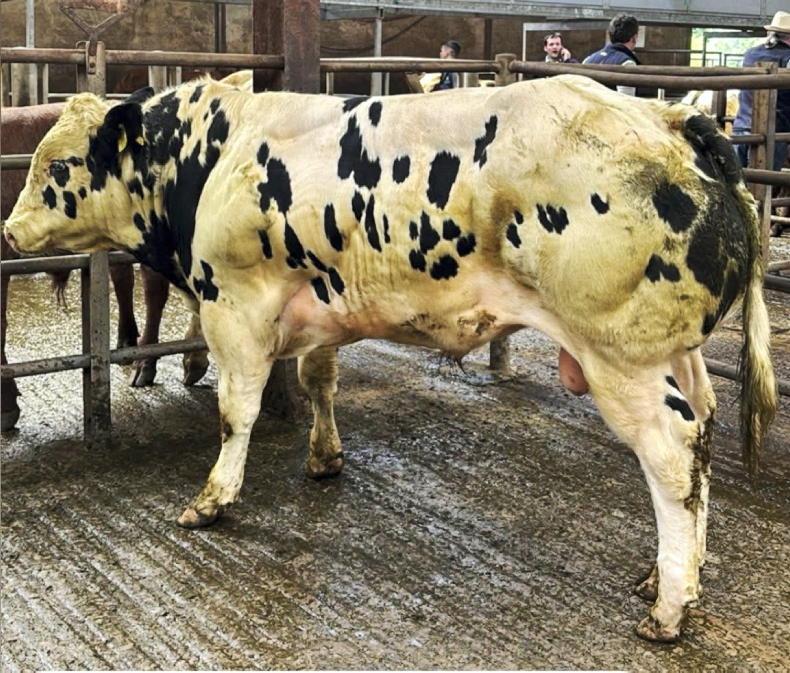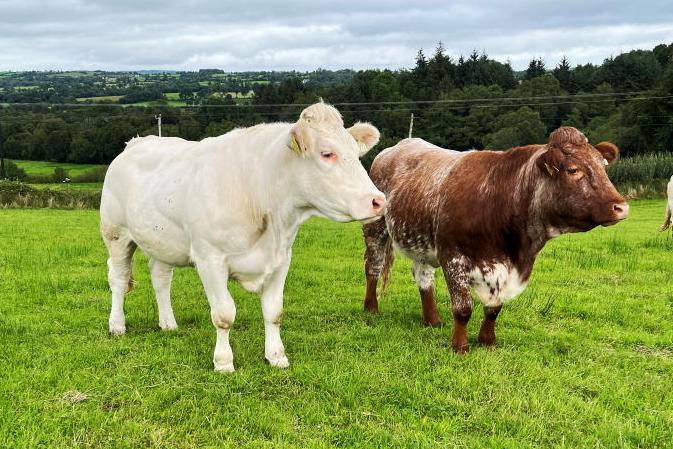After TB testing, pregnancy diagnosis is the second most stressful event on the farm.
Both carry a financial impact, and both involve our local vets so they must be able to make a fair appraisal of my character during these periods of anxiety.
The latest scanning event was not helped when the vet in question told me that the best cow, who I clearly wanted a heifer from, was in calf to a bull. There followed a few dark mutterings about the sexed semen in question, before he confirmed, with a smile on his face, it was in fact a heifer calf.
The herd fertility check two weeks ago was reasonably good with only three cows served over 30 days, showing as not in-calf.
Our biggest issue is the number of cows having silent heats. They are cycling normally and free from metritis or any other complication, but these girls were not in-calf simply because they have not been obliging enough to let us know when to AI.
One obvious solution to this may be to inform them of the current cull cow price and how it compares to the projected milk price to see if this persuades them to be a little more forthcoming with signs of oestrus.
As the majority of those PD’d pregnant are in calf to sexed semen (hopefully ensuring an adequate supply of replacement heifers) we are now happy to introduce our newly acquired Angus bull to the mix. It will also ensure no dairy-bred calves are born after the new year, making it easier to manage replacements.
The bull in question came from the herd of Victor and David Chesnutt. We had purchased another one from their sale last year and were impressed with not only calf quality but also how gentle and docile the bull was. If Victor had been as quiet and unassuming he wouldn’t have been able to deliver as much as he did in his time as UFU president!
Early slurry spreading in north Antrim can be a ‘snatch and grab’ affair that involves making the most of weather and field conditions as they present themselves.
To get the job done this season we have made use of our contractor’s umbilical system, as well as our 2,500 and 1,300 gallon tankers – the choice depended on ground conditions, steepness of fields and distance.
This early application is already showing significant benefit with noticeable grass growth
An umbilical system allowed early coverage of much of the home farm including most cow grazing with the exception of a 10ac autumn reseed which was too delicate for such an operation.
This early application is already showing significant benefit with noticeable grass growth, although much of this momentum may be lost due to recent sub-zero temperatures.
Fertiliser
With the sudden change in weather I am glad fertiliser is still safe in the bag, especially considering what we paid for it last autumn.
Like many others we hedged our bets and bought enough for the spring at the end of last year. At the time, we did not know what the fertiliser market would be in 2023 or even if product would be available. Of course, the price this spring is now considerably lower.
However I am much happier to be in this situation than to find price has gone up or worse still, fertiliser cannot be had. We also had a peace of mind through the winter months.
Weather
On a beautiful warm Sunday morning two weeks ago I watched a group of cows in the shed with their heads up sniffing the breeze blowing through the open sided feeding house. They would have happily gone to grass.
The situation has somewhat changed since then and this swing in metrological conditions could serve as a metaphor for the current milk market.
As price cuts begin to bite, I know it can be hard to remain positive, but when you are stressed it is important not to keep it to yourself. As an industry we have all been here before and just like the current spring weather, brighter times lie ahead.
Read more
TB-free status lightens the farming load
I don’t want to be a busy fool again
After TB testing, pregnancy diagnosis is the second most stressful event on the farm.
Both carry a financial impact, and both involve our local vets so they must be able to make a fair appraisal of my character during these periods of anxiety.
The latest scanning event was not helped when the vet in question told me that the best cow, who I clearly wanted a heifer from, was in calf to a bull. There followed a few dark mutterings about the sexed semen in question, before he confirmed, with a smile on his face, it was in fact a heifer calf.
The herd fertility check two weeks ago was reasonably good with only three cows served over 30 days, showing as not in-calf.
Our biggest issue is the number of cows having silent heats. They are cycling normally and free from metritis or any other complication, but these girls were not in-calf simply because they have not been obliging enough to let us know when to AI.
One obvious solution to this may be to inform them of the current cull cow price and how it compares to the projected milk price to see if this persuades them to be a little more forthcoming with signs of oestrus.
As the majority of those PD’d pregnant are in calf to sexed semen (hopefully ensuring an adequate supply of replacement heifers) we are now happy to introduce our newly acquired Angus bull to the mix. It will also ensure no dairy-bred calves are born after the new year, making it easier to manage replacements.
The bull in question came from the herd of Victor and David Chesnutt. We had purchased another one from their sale last year and were impressed with not only calf quality but also how gentle and docile the bull was. If Victor had been as quiet and unassuming he wouldn’t have been able to deliver as much as he did in his time as UFU president!
Early slurry spreading in north Antrim can be a ‘snatch and grab’ affair that involves making the most of weather and field conditions as they present themselves.
To get the job done this season we have made use of our contractor’s umbilical system, as well as our 2,500 and 1,300 gallon tankers – the choice depended on ground conditions, steepness of fields and distance.
This early application is already showing significant benefit with noticeable grass growth
An umbilical system allowed early coverage of much of the home farm including most cow grazing with the exception of a 10ac autumn reseed which was too delicate for such an operation.
This early application is already showing significant benefit with noticeable grass growth, although much of this momentum may be lost due to recent sub-zero temperatures.
Fertiliser
With the sudden change in weather I am glad fertiliser is still safe in the bag, especially considering what we paid for it last autumn.
Like many others we hedged our bets and bought enough for the spring at the end of last year. At the time, we did not know what the fertiliser market would be in 2023 or even if product would be available. Of course, the price this spring is now considerably lower.
However I am much happier to be in this situation than to find price has gone up or worse still, fertiliser cannot be had. We also had a peace of mind through the winter months.
Weather
On a beautiful warm Sunday morning two weeks ago I watched a group of cows in the shed with their heads up sniffing the breeze blowing through the open sided feeding house. They would have happily gone to grass.
The situation has somewhat changed since then and this swing in metrological conditions could serve as a metaphor for the current milk market.
As price cuts begin to bite, I know it can be hard to remain positive, but when you are stressed it is important not to keep it to yourself. As an industry we have all been here before and just like the current spring weather, brighter times lie ahead.
Read more
TB-free status lightens the farming load
I don’t want to be a busy fool again









SHARING OPTIONS